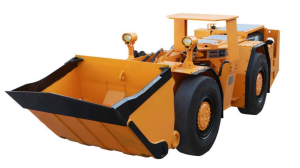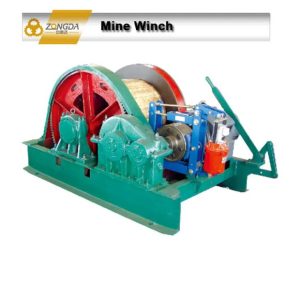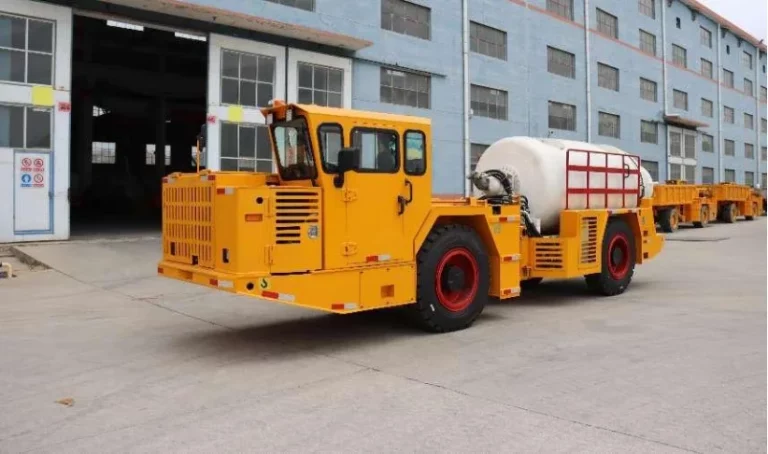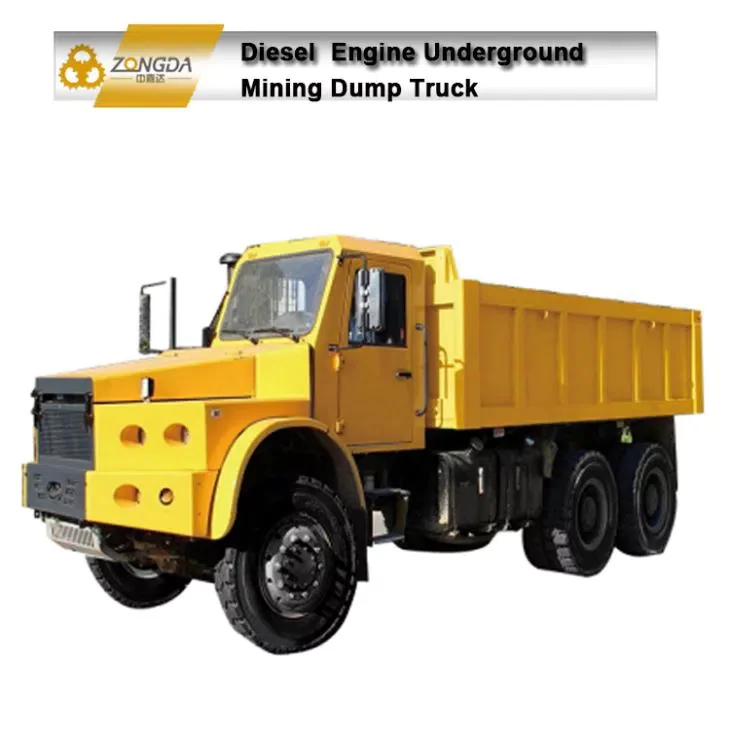Underground mining loaders play a pivotal role in the efficiency and productivity of mining operations. These robust machines are specifically designed to traverse the unique challenges of underground environments, allowing for the effective transport of materials from extraction points to transport areas. Their reliable performance directly impacts the overall output of mining operations, making it crucial to maintain them appropriately. Understanding how to extend the life of these loaders not only enhances their functionality but also significantly reduces operational costs and downtime.
Understanding the Basics of Underground Mining Loaders
Role and Importance in Mining Operations
Underground mining loaders are invaluable assets in mining operations. They facilitate the movement of ore, waste materials, and other resources within underground mines. These machines help to optimize workflow by loading the materials directly from the extraction point into haul trucks or skips for transport to the surface. Effective use of loaders ensures that mining operations run smoothly and helps maintain the overall productivity of the site.
Key Components of an Underground Mining Loader
Underground mining loaders consist of several critical components, including the cab, bucket, hydraulic systems, transmission, and drive systems. The cab houses the operator and features controls necessary for maneuvering the loader. The bucket design is tailored for specific tasks, allowing for the efficient handling of various materials. Hydraulic systems are employed to power lifting and digging operations, while the transmission and drive systems enable agility and adaptability in the confined underground space.
Common Challenges Faced by Underground Mining Loaders
Operating in harsh underground environments presents unique challenges for mining loaders. High levels of dust, moisture, and debris can lead to wear and tear on components. Additionally, the confined spaces of underground tunnels require loaders to navigate with precision, often posing risks of operational inefficiencies. These challenges necessitate regular assessments and maintenance to ensure loaders remain operational and efficient.
Regular Maintenance Requirements
Daily Inspection Checklist
Conducting daily inspections is essential for the effective maintenance of underground mining loaders. Operators should check fluid levels, including engine oil, hydraulic fluid, and coolant, to prevent unexpected failures. Inspecting tires, tracks, and other critical components helps identify potential issues before they escalate. Furthermore, ensuring that safety devices and communication systems are functioning properly is vital for the safety of operators and crew.
Weekly Maintenance Tasks
In addition to daily checks, weekly maintenance should be performed to maintain the functionality of the loader. This includes lubricating moving parts to reduce friction and wear. Filters should be cleaned or replaced to ensure optimal performance of the hydraulic and engine systems. Weekly inspections of electrical systems and battery connections are also important to avoid operational disruptions.
Periodic Deep Maintenance Practices
Monthly Service Routines
Monthly service routines are crucial for keeping underground mining loaders in top condition. This involves more comprehensive checks, including inspecting the undercarriage for wear and tear. Routine fluid changes, including transmission fluid and hydraulic fluid, help prolong the life of the operational systems. All belts and hoses should be inspected for signs of wear, and any issues identified should be rectified promptly.
Quarterly Overhaul Procedures
Quarterly overhauls offer a chance to conduct in-depth inspections and maintenance of the loader. This entails a thorough examination of the engine and hydraulic systems, including checks for leaks, wear, and performance issues. Additionally, the structural integrity of the loader should be assessed to address any potential cracks or damage. Regularly scheduled overhauls enhance the longevity of the machines and ensure they operate smoothly under challenging conditions.
Implementing Preventative Measures
Scheduled Downtime for Maintenance
Scheduling downtime for maintenance is a crucial aspect of operational planning. By setting aside specific periods for regular inspections and repairs, mining operations can minimize disruption to production. This proactive approach helps to avoid unexpected breakdowns, ensuring that the underground mining loader will be operational when needed. Planned maintenance allows teams to address potential issues before they affect overall productivity.
Training for Operators on Best Practices
Training operators on best practices contributes significantly to the maintenance of underground mining loaders. Educating operators about the correct handling techniques helps reduce wear and tear on the machines. Familiarity with the loader’s specifications enables operators to maximize efficiency and performance during operation. Furthermore, training ensures that operators can identify and report issues early, fostering a proactive maintenance culture.
Use of High-quality Replacement Parts
Using high-quality replacement parts is essential for enhancing the life of underground mining loaders. Substandard components can lead to premature failure and increased maintenance costs. It is advisable to invest in OEM (Original Equipment Manufacturer) parts that comply with strict industry standards. These high-quality parts not only ensure compatibility with existing systems but also contribute to the overall reliability of the loader in demanding underground operations.
In conclusion, extending the life of an underground mining loader involves a multifaceted approach that includes rigorous daily inspections, regular maintenance, and the implementation of preventative measures. By understanding the important role these machines play in mining operations, adhering to maintenance requirements, and prioritizing operator training, businesses can optimize the performance and longevity of their loaders. These practices not only enhance operational efficiency but also reduce costs associated with repairs and downtime in the long run.
Leveraging Technology for Proactive Care
Monitoring Systems for Real-time Data
The integration of advanced monitoring systems into underground mining loaders enhances their maintenance and performance capabilities. Real-time data collection allows operators and maintenance teams to monitor various parameters, such as engine temperature, hydraulic pressure, and load weight. Utilizing these systems helps identify anomalies that may indicate a potential failure, enabling quick decision-making and corrective actions before issues arise. Additionally, tracking performance metrics can aid in optimizing workflows, thereby increasing overall productivity.
Software Solutions for Predictive Maintenance
Adopting software solutions designed for predictive maintenance can significantly extend the life of underground mining loaders. These programs analyze real-time data and historical trends to predict when components may fail or require servicing. By implementing predictive maintenance, mining operations can reduce unexpected breakdowns and the associated costs. Moreover, having insights into the maintenance needs allows for more efficient planning of service tasks, maximizing loader availability and minimizing downtime.
Integration with Company’s Overall Maintenance Strategy
Integrating technology into a company’s overall maintenance strategy for underground mining loaders is vital for cohesive operations. By aligning technological solutions with traditional maintenance practices, organizations can create a comprehensive approach that enhances efficiency. This integration ensures that all members of the maintenance team are aware of the data collected and its implications for everyday operations. A well-coordinated strategy promotes teamwork and collaboration between operators, technicians, and management, ultimately benefiting the lifespan of the loaders.
Seeking Professional Support When Necessary
Partnering with Certified Technicians
Engaging with certified technicians bolsters the maintenance regime of underground mining loaders. Professionals trained in specific loader brands bring their in-depth knowledge of both the equipment and the unique challenges posed by underground mining environments. Their expertise can lead to more accurate diagnostics and superior repairs, minimizing future breakdowns. Furthermore, establishing a working relationship with certified technicians ensures prompt support when urgent maintenance or repairs are required.
Utilizing Manufacturer Resources like Zongda
Leveraging manufacturer resources, such as those offered by Zongda, can significantly enhance the maintenance efforts of underground mining loaders. Manufacturers often provide valuable guides, updates, and direct support tailored to their equipment. Utilizing these resources ensures compliance with recommended maintenance practices, contributing positively to equipment longevity. Moreover, manufacturers may offer training programs that keep operators and maintenance staff updated on the latest techniques and technologies.
Benefits of Outsourcing Certain Maintenance Tasks
Outsourcing specialized maintenance tasks can be a strategic advantage for mining operations managing underground loaders. Certain repair procedures may require skills or equipment that in-house teams do not possess, leading to tactical inefficiencies. By contracting external professionals, companies can focus their internal resources on operational needs while ensuring that specialized tasks are performed by experienced personnel. This outsourcing strategy can enhance the overall quality of maintenance while allowing the mining team to concentrate on core activities.
Living the Safety Standards in Daily Operations
Creating a Culture of Safety Awareness
Fostering a culture of safety awareness within the mining team is an integral aspect of maintaining underground mining loaders. Regular discussions about safety protocols and the significance of adhering to operational guidelines promote a proactive mindset among workers. Encouraging team members to report potential hazards or equipment malfunctions contributes to a safer work environment while extending the life of loaders. Moreover, instilling a culture of safety helps prevent accidents that may lead to equipment damage and operational downtime.
Regular Safety Audits and Training Programs
Conducting regular safety audits and training programs is essential for the effective operation of underground mining loaders. Audit processes should evaluate compliance with safety protocols, equipment functionality, and emergency procedures. Training programs tailored to the unique challenges of underground operations familiarize employees with best practices for loader handling and maintenance. Regularly scheduled audits and training ultimately create a safer work environment, enhancing equipment longevity through adherence to standard operating procedures.
Additional Tips for Enhancing Loader Longevity
Appropriate Storage Solutions
Implementing appropriate storage solutions significantly affects the condition and longevity of underground mining loaders. When not in use, loaders should be stored in a clean, dry environment that protects them from harsh climate factors, such as moisture and extreme temperatures. This practice helps to prevent rust, corrosion, and other forms of deterioration that may occur if equipment is left exposed. Moreover, utilizing protective covers can prevent dust accumulation and debris buildup that may compromise moving parts over time.
Adhering to Operational Guidelines
Strictly adhering to operational guidelines is crucial for the successful maintenance of underground mining loaders. Following manufacturer specifications regarding load capacities, speed limits, and maneuvering techniques minimizes the risk of unnecessary stress on the equipment. Educating operators about the significance of routine maintenance tasks outlined by the manufacturer is essential for preventing operational discrepancies. Ultimately, consistent compliance with established guidelines fosters a productive working environment and prolongs the lifespan of the machinery.
Continuous Improvement Strategies
Implementing continuous improvement strategies engenders a proactive maintenance culture surrounding underground mining loaders. Regularly reassessing existing maintenance practices and identifying areas for enhancement allows teams to adapt to changing operational demands. Encouraging feedback from operators can lead to valuable insights about issues they encounter, which can inform adjustments to maintenance protocols. Ultimately, creating an environment that promotes continuous improvement contributes to the longevity and reliability of loaders in demanding underground conditions.







